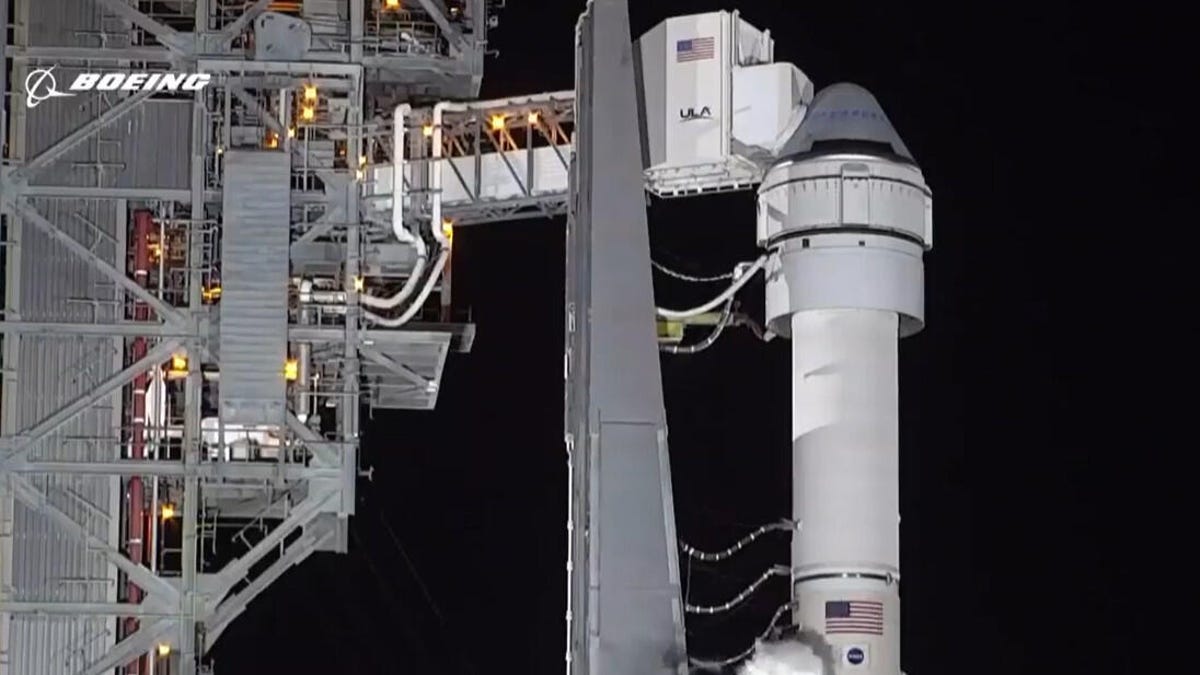Boeing Starliner won't make it to ISS after first launch runs into problems
The uncrewed test flight burned too much fuel after its launch Friday, so it won't reach the space station as planned.

Boeing's Starliner, atop the United Launch Alliance Atlas V rocket.
Boeing's CST-100 Starliner, a new capsule designed to ferry astronauts to space, cut through the predawn light Friday in Florida atop an Atlas V rocket. The launch itself marked an important milestone in NASA's plan to launch astronauts from US soil to the International Space Station for the first time since 2011.
However, Starliner ran into problems. It suffered "off-nominal insertion" getting into orbit and used too much fuel, according to Boeing. So it cannot reach the ISS.
Ever since the retirement of NASA's space shuttle program in 2011, US astronauts have been hitching rides to the ISS aboard Russian rockets. NASA's Commercial Crew Program is meant to bring those capabilities back to the US and has entrusted SpaceX and Boeing to do so.
Unlike Boeing's Starliner, SpaceX's Crew Dragon successfully made it to the space station in a historic mission in March.
"The Kennedy Space Center is back," NASA Administrator Jim Bridenstine said before Friday's launch. "The commercial partners are doing amazing things, it feels really good to be here right now."
Just over an hour after Bridenstine's optimistic comments, United Launch Alliance's Atlas V rocket carried the Starliner capsule, containing a dummy astronaut named Rosie, toward the space station.
However, Starliner had issues that led it to burn too much fuel.
Because #Starliner believed it was in an orbital insertion burn (or that the burn was complete), the dead bands were reduced and the spacecraft burned more fuel than anticipated to maintain precise control. This precluded @Space_Station rendezvous.
— Jim Bridenstine (@JimBridenstine) December 20, 2019
Instead, Starliner likely will return to Earth on Sunday, landing in White Sands, New Mexico.
We have a projected return to White Sands in 48 hours. If we can stay longer and get more test objectives, we will do that.
— Boeing Space (@BoeingSpace) December 20, 2019
- Boeing VP of Space and Launch Jim Chilton
Bridenstine noted that the problem was related to automation and that a live crew would have been able to solve the issue.
The launch comes at a time when Boeing's safety record is under fire, following two crashes of its 737 Max passenger planes in the past 14 months and the subsequent grounding of that fleet.
The original plan was for Starliner to dock with the ISS at 5:27 a.m. PT Saturday. Following a week at the station, Starliner would have undocked on Dec. 28 and returned to Earth.
Dates for crewed launches of the Boeing Starliner and SpaceX's Crew Dragon have not been set by NASA. Before Friday's launch problem, Bridenstine said the two companies would be taking astronauts to space within months. It's unclear how Friday's issue may affect those plans.
First published at 3:52 a.m. PT.
Updated at 7 a.m. PT: Adds details about the problem.



